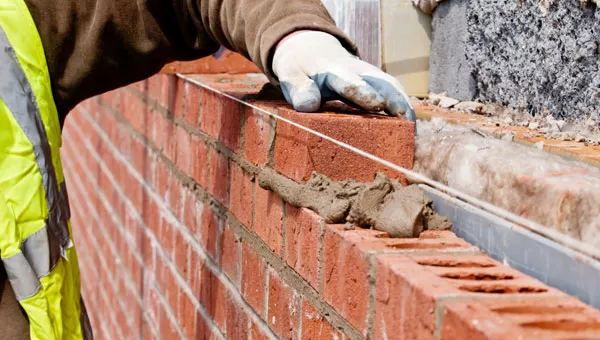Unlocking the Secrets of Sustainable Stonework Building And Construction Practices for Eco-Friendly Structures
Amongst the myriad strategies to environmentally friendly building, lasting masonry building stands out as a time-tested and sturdy method that holds a wide range of untapped capacity. From the selection of materials to cutting-edge construction strategies, the secrets to attaining sustainability within masonry building are multifaceted and appealing.
Benefits of Sustainable Masonry Building
Accepting lasting stonework building and construction techniques not just reduces environmental impact but also offers long-term economic benefits to contractors and communities. By utilizing materials like recycled bricks, blocks, and rocks, builders can significantly lower the carbon impact of their jobs while promoting source performance. Furthermore, sustainable masonry construction techniques, such as proper insulation and thermal mass homes, can improve energy efficiency within structures, bring about minimized functional costs over time.
Moreover, the durability and strength of stonework structures contribute to lasting financial benefits. Buildings created utilizing sustainable masonry techniques commonly need less upkeep and repair service, translating to set you back financial savings for contractors and home owners. The long life of masonry products likewise guarantees that frameworks stay stable and safe and secure, minimizing the need for constant remodellings or substitutes.
Eco-Friendly Stonework Materials
Using environmentally friendly stonework materials is a crucial step in the direction of improving the sustainability of construction methods and minimizing ecological impact while making best use of long-lasting financial benefits. Lasting masonry materials are sourced, generated, and used in a fashion that decreases total environmental effect. Products such as recycled bricks, redeemed stone, and sustainable cinder block are becoming significantly popular options for eco-conscious building contractors. Recycled bricks, as an example, not just divert waste from garbage dumps yet also call for less energy to generate compared to new blocks. Redeemed stone uses an one-of-a-kind aesthetic charm while lowering the need for new quarrying. Sustainable concrete obstructs include recycled aggregates and may include better insulation residential or commercial properties, adding to power performance in buildings.
In addition, all-natural products like adobe, rammed planet, and straw bales supply exceptional thermal mass residential properties, decreasing the requirement for home heating and cooling energy. These materials are commonly locally available, promoting local economic climates and reducing transportation-related carbon emissions. By picking environment-friendly stonework products, building and construction projects can substantially reduce their environmental impact and contribute to the production of healthier, extra lasting developed atmospheres.
Energy-Efficient Masonry Strategies
Power efficiency plays a vital role in boosting the sustainability of masonry building practices. One crucial energy-efficient masonry method is the usage of thermal mass, which involves including dense products like concrete or block into the structure's framework to take in and stamped concrete and pavers save heat.

Innovations in Sustainable Masonry
Current innovations in lasting masonry practices have caused ingenious methods that are improving the building and construction sector. One such technology is the development of self-healing concrete, which utilizes bacteria embedded within the concrete to recover splits autonomously. This advancement not only decreases upkeep costs but additionally improves the resilience of masonry structures, adding to their sustainability.
One more noteworthy advancement is making use of recycled aggregates in masonry building - masonry contractor. By incorporating materials such as crushed ceramic waste or recycled glass right into concrete blends, building contractors can lower the ecological effect of building jobs while maintaining structural honesty. This technique not just diverts waste from landfills but additionally preserves suspended garage floor design natural deposits, making it a key advancement in lasting stonework building
Furthermore, the assimilation of electronic style tools, such as Structure Info Modeling (BIM), is transforming the way stonework frameworks are planned and created. BIM enables more precise estimations, minimized material wastefulness, and enhanced energy performance, eventually leading to even more sustainable structure methods. These developments jointly represent a promising future for lasting masonry building and construction in the age of eco-friendly structures.
Future Trends in Masonry Sustainability
With the cutting-edge strides made in sustainable stonework practices, the future fads in masonry sustainability are positioned to further change the building sector. Among the key fads shaping the future of stonework sustainability is the increased combination of technology. Improvements such as floor stamping Building Info Modeling (BIM) and digital reality simulations are being made use of to optimize stonework building and construction processes, bring about reduced product waste and boosted energy effectiveness in structures.
Additionally, the growth of novel sustainable products is established to play a significant function in boosting the eco-friendliness of masonry building. masonry contractor. Technologies like self-healing concrete, recycled aggregates, and bio-based binders are getting grip for their ability to reduce ecological influence while maintaining structural stability

Conclusion
In final thought, lasting stonework building practices use many benefits for environmentally friendly buildings. masonry contractor. Innovations in lasting stonework are constantly being developed to better boost the environmental performance of structures.